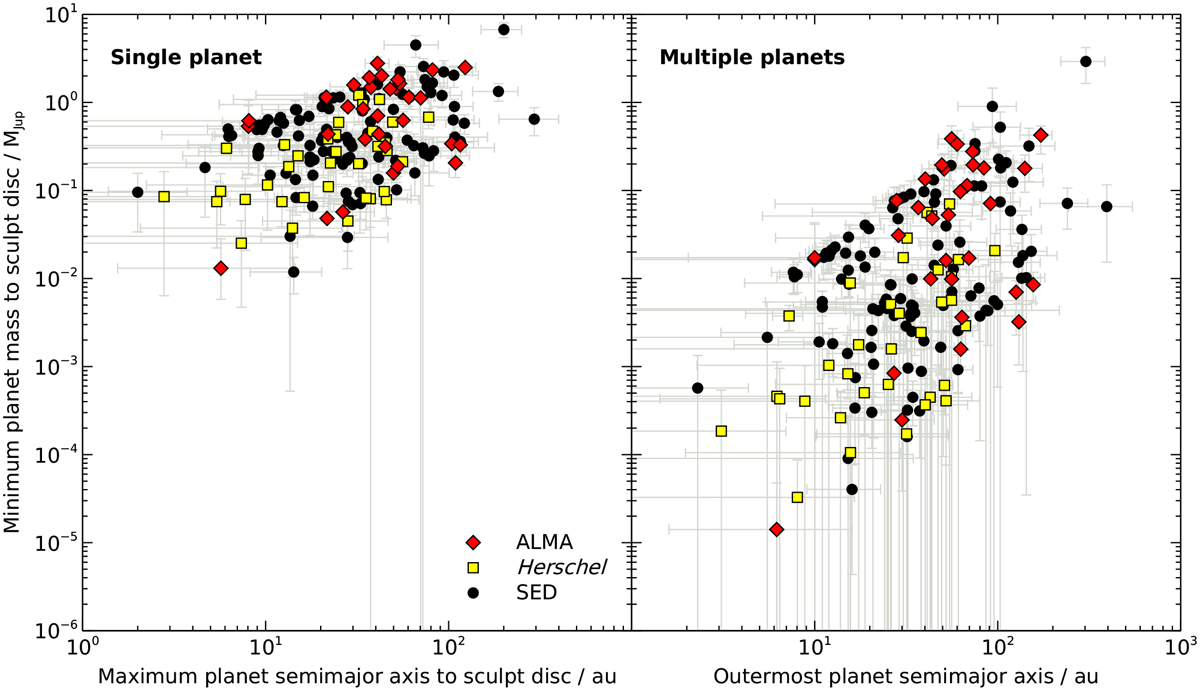Fig. 9

Download original image
Masses and locations of the smallest planets required to sculpt our debris disc inner edges, assuming the planets lie interior to those discs (Sect. 3). Left plot: minimum planet masses required if each disc is sculpted by a single planet (Pearce & Wyatt 2014). More massive planets located farther inwards could also sculpt the discs to the same degree. Right plot: minimum individual planet masses required if each disc is instead sculpted by multiple, equal-mass planets (Shannon et al. 2016), where the outermost planet location is fixed at the disc inner edge. The single-planet model (left plot) requires larger planet masses to sculpt discs than the multi-planet model does (right plot), mainly because multiple planets are more efficient at removing debris. Symbols denote the disc data sources, where the best-available source has been used for each system; systems with ALMA data (red diamonds) are expected to yield the most reliable planet constraints, followed by those with Herschel data (yellow squares), then finally those with only unresolved SED data (black circles). The larger uncertainties on the multi-planet masses are driven by uncertainties on the disc inner edge locations; the multi-planet model has a stronger dependence on this than the single-planet model does.
Current usage metrics show cumulative count of Article Views (full-text article views including HTML views, PDF and ePub downloads, according to the available data) and Abstracts Views on Vision4Press platform.
Data correspond to usage on the plateform after 2015. The current usage metrics is available 48-96 hours after online publication and is updated daily on week days.
Initial download of the metrics may take a while.


